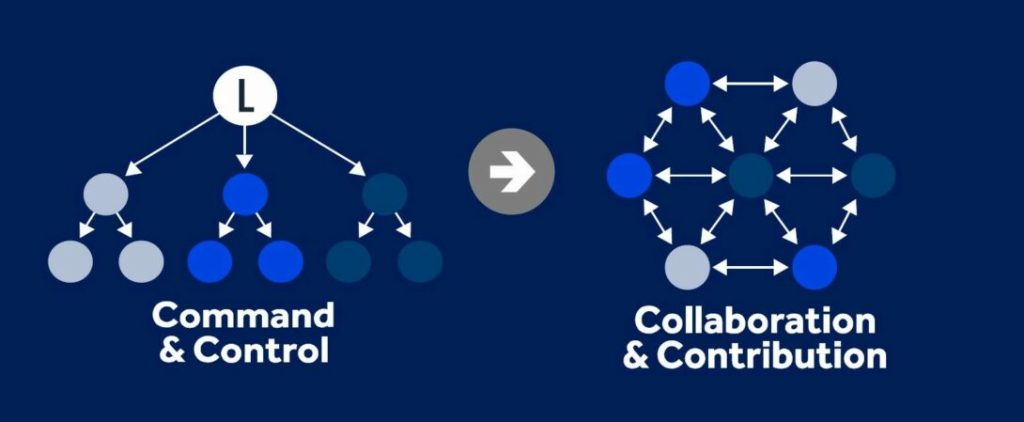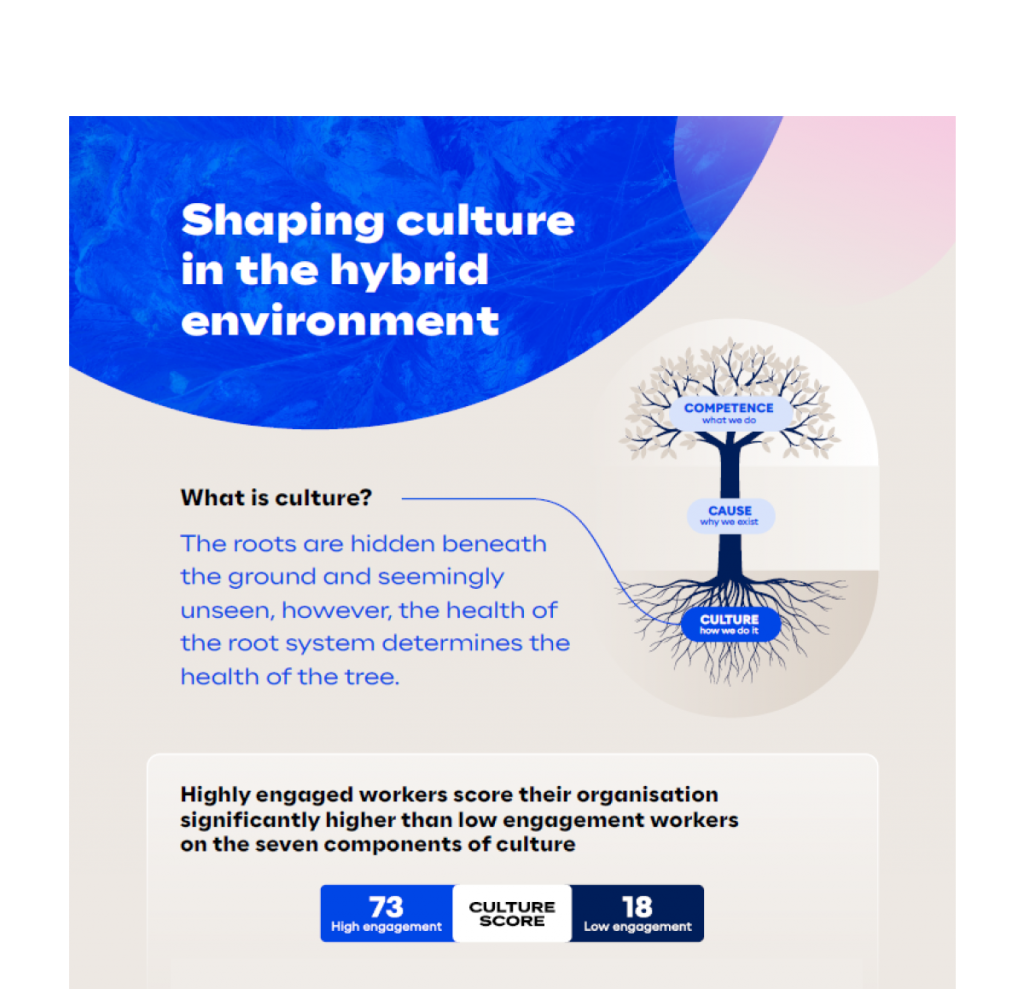By: McCrindle
Leaders are a catalyst for change, inspiration, productivity and output. In our recent report, when we looked at what creates a thriving culture, leadership was the key factor. In this article, we provide 6 ways leaders can shape culture in hybrid environments including key considerations for leaders, on what research says are key things to do when building culture.
1. Build an environment of trust
As work transitions to being conducted with greater flexibility around location and time, there needs to be intentional investment made in building trust across the entire organisation. One of the key responsibilities of a leader is to create a culture of trust. Leaders empower their team by building trust. When teams trust one another, depth is created and more leaders are developed. In our book Work Wellbeing, we likened this to being similar to the growth rings of a tree.
“Like the growth rings on a tree, our lives occasionally experience seasons of extraordinary flourishing. We have found three catalysts for such growth: significant adversity, extreme dissatisfaction, and exposure to an exceptional leader.”
Our lives occasionally experience seasons of extraordinary flourishing. There are three catalysts for such growth; significant adversity, extreme dissatisfaction and exposure to an exceptional leader. These are significant factors in people growing professionally and personally. This provides an opportunity for leaders to build trust and lead people as they their grow teams.
2. Lead with empathy
Leading with empathy means using emotional intelligence, not just traditional intellect (or IQ). It is the ability to communicate in a structured sense as well as a relational one. Great leaders communicate what is going on and the vision of the team in a way that relates to people’s intrinsic human needs.
3. Prioritise clear and consistent communication
In a decentralised environment, clarity is key. Without in-person gathering moments where culture is caught more than taught, leaders are required to be clear and on the front foot with their communication.
It is essential to consider the experience for those who are in the room and those who are not. Utilising asynchronous communication and ensuring information is up-to-date and accessible by all regardless of location is essential.
4. Focus on growth
Great leaders have a focus beyond just productivity and finances. They focus on the growth of their teams and leaders. Two ways to measure leadership is to evaluate the culture created and the people developed.
Yes, we want people to develop their skills and talents. A great leader will also focus on building character of the people within the team. Within a hybrid work environment, leaders need to be intentional about creating mentoring and coaching opportunities for all team members, regardless of location.
“The two key factors by which to measure leaders are the enduring culture & the depth of people development”
5. Decide what is best for your team
While hybrid ways of working are here to stay, that doesn’t mean that the way forward is the same for each organisation. The challenge in designing hybrid work that is meaningful, fair, engaging and empowering is to not simply optimise the benefits but consider the trade-offs. To design a solution that is strategic and beneficial for your organisation, invite employees into the conversation.
This doesn’t mean you have to abide by their every wish, but it does ensure they are brought along the journey and their perspective is considered. Designing a solution that is strategic and beneficial for your team, the type of work your organisation does and the impact of it on your culture and values is not always easy or straightforward, but it is worth it.
6. Align and empower
When goals and objectives are clear, workers can be trusted and empowered to get the job done with a level of autonomy and flexibility. Hybrid and remote work environments done well require leaders to be clearer on the goals and strive for simplicity across the organisation.
That means having the right style of leadership, no longer the hierarchical leadership like command and control but far more collaborative and contribution models. In these models, people are empowered and leaders are created.

Leaders who are creating healthy cultures in a decentralised environment are not micro-managing but trusting, empowering and creating opportunities for their team to rise to the occasion.
We hope you found these insights interesting and helpful, and have inspired you to think differently or afresh about how you lead your teams. For more insights download our free infographic on shaping culture.
Shaping thriving culture infographic
Get the key insights and stats on how leaders can shape thriving cultures in decentralised environments in this handy infographic.
Article supplied with thanks to McCrindle.
About the Author: McCrindle are a team of researchers and communications specialists who discover insights, and tell the story of Australians – what we do, and who we are.
Feature image: Photo by vadim kaipov on Unsplash

